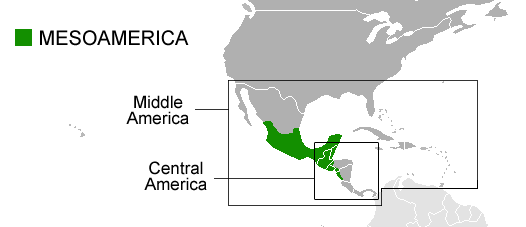DNA analyses of ancient individuals buried in what is now Belize have introduced a plot twist to the story of how hunting and gathering transitioned to farming in Mesoamerica.
- By STEPHANIE DUTCHEN
Until now, a mainstream view in archaeology has been that agriculture spread across the Americas as groups of people shared crops and technologies, the concepts and tools spreading while the people themselves mostly stayed put.
The new genetic analyses, however, indicate that a group of people moved from south to north and likely brought farming technology with them, similar to migration-driven agricultural revolutions documented in Eurasia and Africa. The newcomers eventually outnumbered the original inhabitants, the analyses suggest.
Findings from the international team, co-led by geneticists in the Blavatnik Institute at Harvard Medical School, were published online March 22 in Nature Communications.
Hot region, cool discovery
The study focused on the Maya Region of Belize, where the Mayan Empire reached its peak from 250 to 900 CE. Ancient DNA analysis in this area is challenging because it's hard to find well-preserved genetic material in hot and humid climates.
This changed after team members discovered "exceptionally preserved" samples from dozens of individuals who'd been buried in two Maya Region rock shelters between 3,500 and 9,500 years ago.

Whole-genome analyses of 20 of these individuals revealed that a group of people migrated into the Maya Region by about 5,600 years ago, shortly before farming began in earnest there.
The group appears to be most closely related to people today who speak Chibchan languages and live on and around the land bridge linking Central and South America. The team found that present-day people who speak Mayan languages also can trace the largest component of their ancestry to this ancient group.
The researchers note that the arrival of the ancient group coincides with the first evidence in the Maya Region of forest clearing and fully domesticated varieties of maize, cassava, and chili peppers, crops that had already been established in South America. By 4,000 to 4,700 years ago, people in the Maya Region were relying on maize as a staple crop.
The connection between the arrival of the new population and the rise of farmed crops "attests to the important contribution of migration to the intensification of food production and later development of complex societies in this region," said the study's senior author, David Reich, professor of genetics at HMS and professor of human evolutionary biology at Harvard University.
Beyond Eurasia
The work takes a leap forward in understanding the genetic history of the Maya Region during the transition to farming in Mesoamerica and represents the latest effort among ancient DNA researchers to turn focus to understudied areas of the world.

"An extraordinary amount of attention has been devoted to what ancient DNA can tell us about the introduction of farming in Europe and the Near East, but this topic has been almost ignored in the Americas," Reich said.
"Although DNA preservation explains part of the problem, another part can be attributed to Eurocentrism in the field. We're pleased to be part of a global movement emphasizing partnership with people in a greater diversity of regions and reduction of research disparities."
The work followed ethical guidelines proposed in 2021 by an international consortium that included some co-authors of the current study. For instance:
- The new work emerged from an almost two decades-long series of community-based archaeology projects involving multiple Maya communities in southern Belize, led by archaeologists and co-first authors Douglas Kennett of the University of California, Santa Barbara, and Keith Prufer of the University of New Mexico. Many of the Indigenous Maya community collaborators are also co-authors.
- Kennett, Prufer, and co-first author Mark Lipson, an academic associate in the Reich lab, helped report the results of the study to the local community and incorporated feedback into the initial manuscript submission.
- The paper was published under an open-access agreement.
- The full data are publicly available so others can replicate and reassess the findings.
This work was funded by the Alphawood Foundation, National Science Foundation (SBE1632061, SBE-1632144), National Institutes of Health (grants GM100233 and HG012287), John Templeton Foundation (grant 61220), and the Allen Discovery Center program, a Paul G. Allen Frontiers Group advised program of the Paul G. Allen Family Foundation. Reich is also an Investigator of the Howard Hughes Medical Institute.






